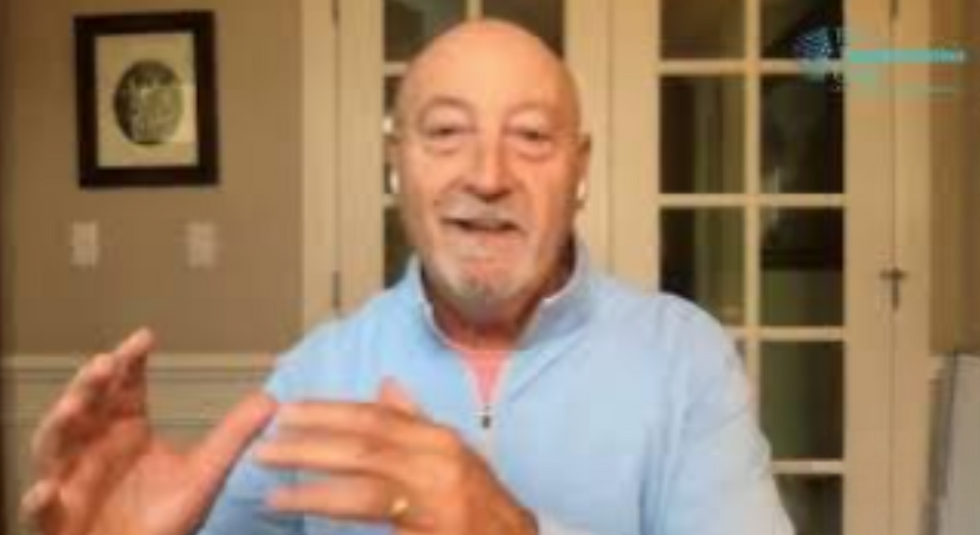What Defines a Transformational Leader?
- Lisa West

- Oct 23
- 4 min read
Updated: Nov 16
A Reflection from The Transformation Guild™ Keynote and Panel Featuring Tom Daly, Founder

When The Transformation Guild Founder, Tom Daly, took the stage to deliver his keynote on “What Defines a Transformational Leader,” he began with a challenge:
“Organizations don’t transform. People transform. The question is, do they believe you enough to follow?”
That premise set the tone for a candid conversation among transformation executives from various industries. They joined Daly for a panel discussion on leadership, alignment, and belief. What followed wasn’t a checklist; it was a playbook for clarity, credibility, and courage in a world that’s moving faster than many organizations can adapt.
Transformation Is a Credibility Test
Daly’s opening remarks drew from The Transformation Guild’s ongoing Four Currents™ research, now informed by more than 5,000 leaders and employees worldwide. The findings reveal a clear correlation: when confidence and alignment drift apart, transformation stalls.
“You can’t out-communicate misalignment,” Daly said. “The most sophisticated strategy fails if people don’t believe it will make their work, or their world, better.”
Belief, as he pointed out, has a short shelf life. Most employees expect tangible results within 6–24 months of a transformation’s launch. This time constraint doesn’t diminish the importance of vision; it amplifies the importance of proof.
Clarity Over Simplicity
A recurring theme in both Daly’s keynote and the ensuing discussion was the distinction between clarity and simplicity. Transformation isn’t simple, and pretending it is can erode trust. Leaders must instead make complexity clear, showing teams how the moving parts connect, what’s changing, and why it matters.
“When things get simplified too early,” Daly noted, “you stop solving the real problem and start solving the one that’s easiest to describe.”
Clarity, not simplification, is what enables alignment.
Five Signals of Transformational Leadership
From the panel’s collective insights, five patterns emerged—consistent across industries, company sizes, and transformation types:
People Before Platforms. Technology can accelerate change, but belief sustains it. Transformational leaders start by aligning people inside and outside the organization around shared intent.
Evidence Over Eloquence. Credibility compounds through visible proof, not slide decks. Early wins, no matter how small, keep belief alive.
Safety Fuels Innovation. Teams only take risks when they know they can recover. Psychological safety is the precondition for experimentation.
Foresight Matters More Than Forecasts. Transformation leaders sense shifts early and prepare their teams for the next normal, not just the current one.
Adaptability Is the New Authority. The best leaders don’t know everything. They know how to learn faster than the rate of change.
Leading in the Age of AI
The discussion inevitably turned to AI, a symbol of both opportunity and anxiety. Panelists described the tension between efficiency and humanity: the need to embrace automation without losing the essence of human contribution.
One takeaway was especially resonant: every invention isn’t an innovation. Innovation creates measurable value for customers or employees. Everything else is curiosity. The leaders agreed that upskilling, not displacement, should define AI-era leadership. As Daly framed it:
“AI won’t replace jobs; it will replace work. The question is whether your people are equipped to do the new kind of work that follows.”
The Human Core of Change
Beneath every strategy and system lies a human truth: transformation triggers loss before it creates gain. People must first release old ways of working, and that requires empathy. Several leaders described the importance of honoring what came before. Allowing teams to “grieve” what’s ending makes space for what’s emerging. Transformation, in this view, is not imposed; it’s invited.
From Belief to Momentum
Tom Daly closed the evening by returning to the image at the heart of The Transformation Guild™ brand: a tugboat helping big ships turn in tight waters towards a digital future.
“Transformation isn’t about commanding the ship; it’s about earning belief from those aboard. When leaders trade control for clarity, the current begins to shift.”
Key Takeaways for Transformation Leaders
Credibility is the real KPI. Progress isn’t measured in milestones; it’s measured in belief.
Proof creates progress. Ship evidence early. Even small, visible results reset confidence.
Clarity outperforms charisma. Make the path visible, not just inspirational.
Psychological safety precedes innovation. People take smart risks when failure isn’t fatal.
Empathy accelerates adoption. Acknowledge the human cost of change.
The Future of Transformation Leadership
As we look ahead, the role of transformational leaders will continue to evolve. They must navigate a landscape filled with rapid technological advancements and shifting employee expectations. This requires not only adaptability but also a commitment to fostering an environment where innovation can thrive.
Building Trust and Engagement
Engaging employees in the transformation process is crucial. Leaders must prioritize building trust through transparent communication and active listening. This helps in creating a culture where employees feel valued and heard.
The Role of Continuous Learning
In this fast-paced world, continuous learning is vital. Leaders should encourage their teams to embrace lifelong learning. This not only enhances skills but also fosters a growth mindset that is essential for navigating change.
Embracing Diversity and Inclusion
Diversity and inclusion play a significant role in transformation. Leaders must ensure that diverse perspectives are included in decision-making processes. This leads to more innovative solutions and a stronger organizational culture.
Conclusion: The Path Forward
Transformation is a journey, not a destination. It requires ongoing effort, commitment, and a willingness to adapt. By focusing on credibility, clarity, and empathy, leaders can guide their organizations through change successfully.
About The Transformation Guild™
The Transformation Guild is a research and remediation company dedicated to helping organizations uncover and close the hidden credibility gaps that can sink even the most well-designed transformation. Through the Four Currents™ Framework, we equip leaders with the clarity, evidence, and tools to build alignment, restore belief, and deliver transformation with confidence.




Comments